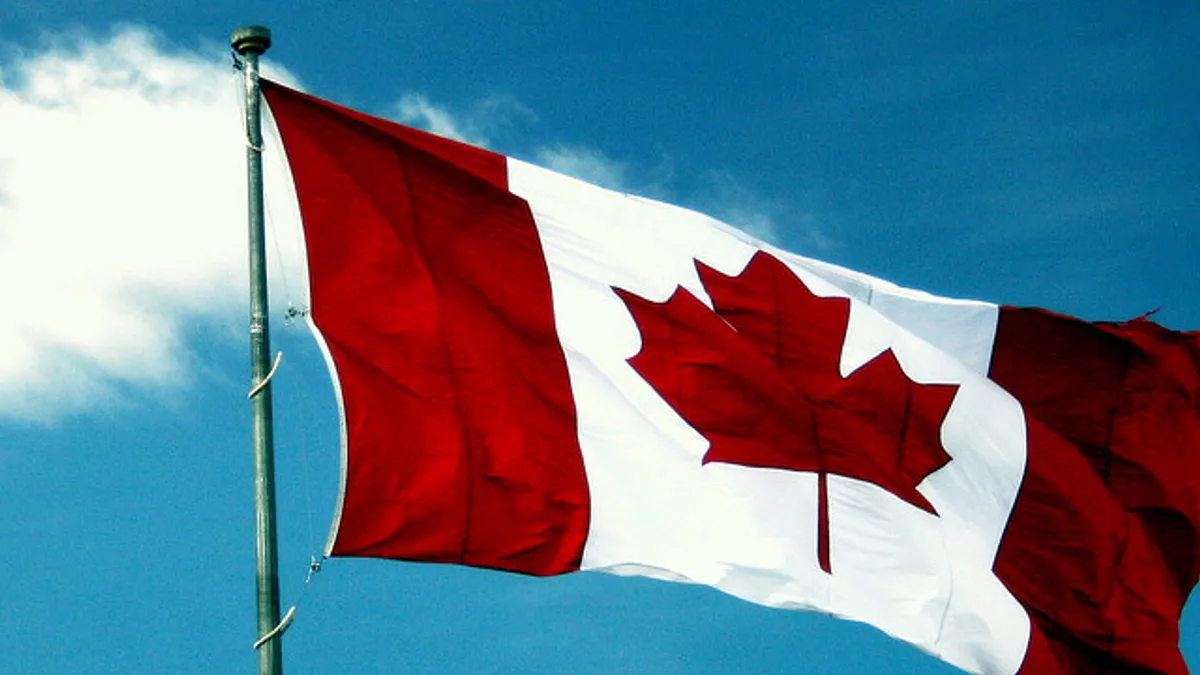Several U.S. retailers have set up shop in Canada, or plan to, with mixed results. Target infamously has lost $1.4 billion since entering the Canadian market a little over a year ago. Sears, Lowe's, and Wal-Mart Stores, Inc. are also stumbling.
Nordstrom, perhaps taking a note from these retailers' experiences, is treading more carefully, opening its first store north of the border this month, and easing back on plans for its Nordstrom Rack stores until it has some experience in the country.
And some retailers are throwing in the towel entirely. Staples recently announced it would close 15 stores in Canada. Sears Canada looks to be on its last legs after years of operations there.
But with these cautionary tales, many others are still making plans for Canada. Marshalls, J. Crew, and Ann Taylor recently opened shop there, and Saks Fifth Avenue (now owned by a Canadian parent), DSW, American Girl, Jimmy Choo, and Bloomingdale’s all reportedly have plans. Target, to many people’s surprise, is continuing with plans to open more stores.
Will they find success? Here, a look at the benefits and harsh realities of setting up shop in the Great White North.
Why retailers are attracted to Canada
One reason many retailers have been eager to set up operations in Canada is simply because the country’s economy didn’t suffer the near-meltdown that we did in the States a few years ago, in part because banks there made more conservative loans and investments.
Another perceived plus? Fewer Canadian shoppers expect the level of discounts that American consumers have come to demand.
And consumers in Canada tend to shop in brick-and-mortar stores more and online less compared to American shoppers, in part because prices, and shipping, are often higher. Stores in malls see 20% more sales per square foot than in the States.
The surprising realities of Canadian retail
But things aren't always what they seem. Any tolerance of higher prices in Canadia is likely overtaken by the higher costs of retail operations there. The minimum wage is higher, taxes are higher, and, because distances are greater between populated areas, distribution costs are higher. In some areas, signs and consumer information must be provided in English and French, sometimes with the French more prominent, another costly task for some retailers.
Beyond that, Canadians aren’t all that tolerant of higher prices, after all. For one thing, the economy there, buffeted by uncertainty in the global economy, has taken something of a hit recently, and the Canadian dollar is weaker.
And those higher sales at malls? It’s because there are far fewer malls in Canada than in the United States.
Many Canadians, who in some areas are close enough to the United States border that they shop in the States, expect prices and selection in Canada to be comparable to the American stores they’re familiar with. In fact, one of Target’s biggest problems in Canada was that selection was poor and prices too high.
Furthermore, although the e-commerce hasn’t nearly approached where it’s at for American retail, Canadians are indeed increasingly shopping online. That may only continue as more American retailers offer shipping to Canada at lower-than-outrageous rates.
American and other foreign retailers are likely to keep looking at Canada as fertile ground to establish operations, but many lessons have been learned, according to a recent report by commercial real estate services company Los Angeles-based CBRE.
Lessons learned
In 2012, Canada, among 61 countries, had the sixth largest number of foreign retail companies come across its borders. A year later, Canada didn’t rank on the list, and had no cities among the 20 most looked at by potential retailers, according to the report, “How Global is the Business of Retail.”
“While Canada remains an appealing destination for global retailers, our competitors are catching up and Canada has had to relinquish our unusually large share of the spotlight,” Ross Moore, Director of Research for CBRE in Canada, told Retail Insider magazine. “One reason for the decrease in new retailers coming to Canada is that there is little to no vacancy in highly sought after shopping centers and high street locations. It is only natural for there to be a pause while developers and supply chains adjust to the influx of brands from years past.”













